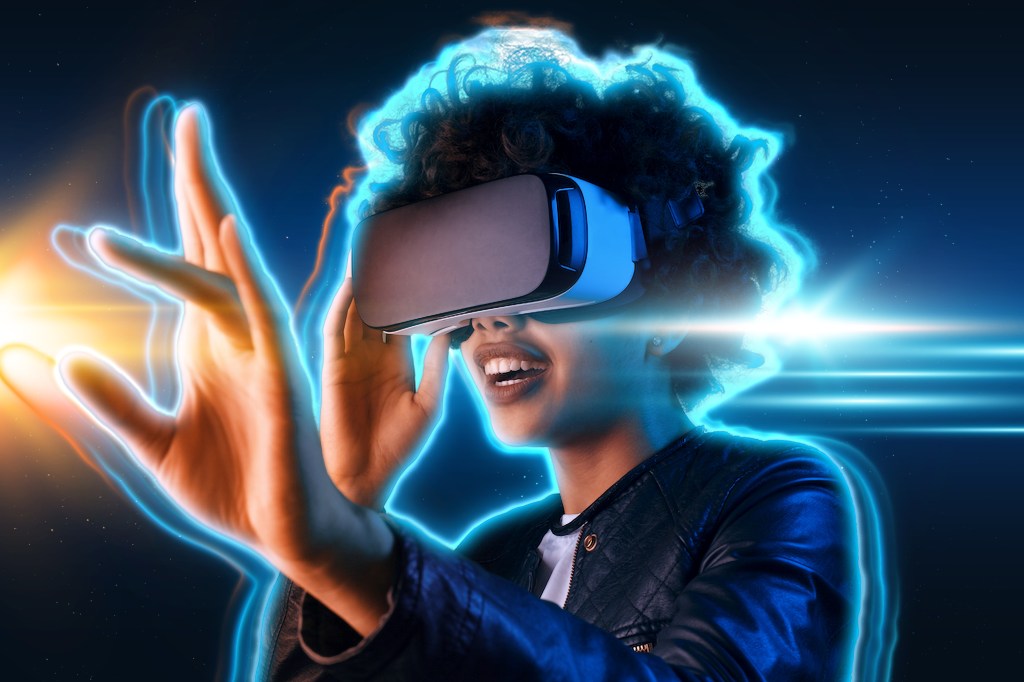Gartner predicts that by 2026, 25% of all people will spend at least one hour per day in the metaverse for shopping, work, education, social or entertainment.

Picture this: It’s a lazy rainy Sunday. After cancelling lunch with friends, you decide to hang out in the metaverse instead.
You go to a virtual fashion show where your favourite designer is showcasing their latest drop.
As your web3 wallet is scanned for your credentials, you receive a notification saying you are qualified to mint an NFT dress, which can be worn in a series of virtual worlds.
You also want to buy the physical one, so the virtual shop assistant redirects you to the e-commerce site where you can choose your size, colour and customisations using the AR try-on feature.
You pay with your wallet. Your order is processed. On Wednesday, it will be delivered to your office.
Sound unrealistic? Well its not, according to the experts.
Gartner predicts that by 2026, 25% of all people will spend at least one hour per day in the metaverse for shopping, work, education, social or entertainment. This expected increase in usage, coupled with more advanced virtual reality (VR) environments and virtual avatar creation, has driven many brands to explore the sale of virtual goods.
This peek into the future of retail via the Metaverse shows how we will be able to connect with your favourite brands and designers, try items, receive personalised services, and attend immersive VIP events, regardless of where you are in the world. From physical to digital to the metaverse. That will be omnichannel at its finest.
So, what is the Metaverse? Don’t worry it’s not a stupid question.
In a nutshell, it is the next phase of the internet – a convergence of our physical and digital lives.
It is not a single platform or owned by a single company. It is enabled by many technologies including AR and VR, AI, 5G, blockchain and is centred around a shift to a trustless, decentralised digital world.
The metaverse of today is nascent. However, fashion seems to be leading the charge, opening a new world of possibilities for technology and tools such as augmented reality try-ons, gaming partnerships and avatars that can interact in digital worlds.
High end luxury brands are already opening up new sources of income with NFTs, stronger customer loyalty, guaranteed authenticity (due to the Ethereum blockchain), a modern look and new target audiences. It has become a way to introduce younger, tech-savvy customers and crypto collectors. NFT’s have become a new kind of status symbol.
Take for example Louis Vuitton. The heritage brand introduced, Louis: The Game app, which incentivises players to learn about its history of the brand with the reward of winning NFTs.
There is no question web3 (think of this, for those non-techies among us, as the next evolution of the internet) will fundamentally change the way we engage with information. It will be a critical part of our children’s and grandchildren’s lives, and for businesses. It will change the way consumers of the future engage with brands.
That being said, as a debunker of new-tech hype, I predict many a crazy story in these early stages, some successful and some not so much.
For example, did you hear about the digital art piece (NFT) by creator Beeple that ended up selling for $69 million, which, by the way, is $15 million more than Monet’s painting Nymphéas sold for in 2014? Even the most savvy of techies find it hard to get their heads around that one!
The most common NFT use cases are:
- Digital twins – think of this as a digital version of a physical product
- Digital Native Assets – only accessible in the Metaverse
- Attendance Tokens – New York Fashion Week offered NFT holders special privileges,
- such as VIP access into shows
NFTs should be created with a sense of purpose and value in mind, rather than being an ornament to your offerings. There is a delicate balance required between branding v experience v sales. A lot of brands are looking to move into gaming which will only succeed if they approach it as player-first. It’s got to be fun.
Smart retailers and brand marketers need to focus on building and implementing an NFT roll out.
But don’t just take my word for it. McKinsey’s State of Fashion 2022 report predicted that NFTs are likely to become a staple for retail over the next year.
Omni-channel retail is now the trifecta of Physical-Digital-Immersive Having said all of that, there is some good news for us old school shoppers. Physical malls will not be going away anytime soon. The 17-to-24-year-olds are a native digital generation, but they still love the physical aspect of shopping.
It’s about a hybrid approach. One that boosts a sense of self-empowerment and ownership of our whole self.
My hope is that one rainy day the metaverse, or should I say the wider web3, becomes something beautiful, connective and complimentary to support and enhance our IRL existence.
Laura Doonin is a digital commerce and transformation leader.